Home insurance provides crucial protection for your most valuable asset, but many homeowners unknowingly find themselves underinsured.
This common pitfall can leave you financially vulnerable if disaster strikes.
Understanding how to properly insure your home is essential for safeguarding your property and peace of mind.
Ensuring adequate coverage requires regularly reviewing and updating your policy to reflect your home’s current value and your personal circumstances. By taking proactive steps and working closely with your insurance provider, you can avoid the risks of being underinsured and secure comprehensive protection for your home and belongings.
1) Review Your Coverage Annually
Regularly reviewing your home insurance coverage is crucial to avoid being underinsured.
Set a reminder to examine your policy each year, ideally before renewal.
During your annual review, assess any changes to your home’s value.
This includes renovations, upgrades, or additions that may have increased your property’s worth.
Consider changes in your personal belongings.
Have you acquired expensive items like jewelry, art, or electronics? These may require additional coverage or separate riders.
Check if your policy’s coverage limits have kept pace with inflation and rising construction costs. Updating your policy ensures you have enough to rebuild your home if necessary.
Evaluate your liability coverage.
As your assets grow, you may need to increase this protection to safeguard your financial future.
Review any new risks in your area.
Has there been an increase in natural disasters or crime? You might need to adjust your coverage accordingly.
Don’t forget to inform your insurer about any home improvements or security upgrades.
These changes could qualify you for discounts or affect your coverage needs.
If you’re unsure about your coverage, consult with your insurance agent.
They can help you understand your policy and recommend adjustments to ensure you’re adequately protected.
2) Update Your Policy with Major Improvements
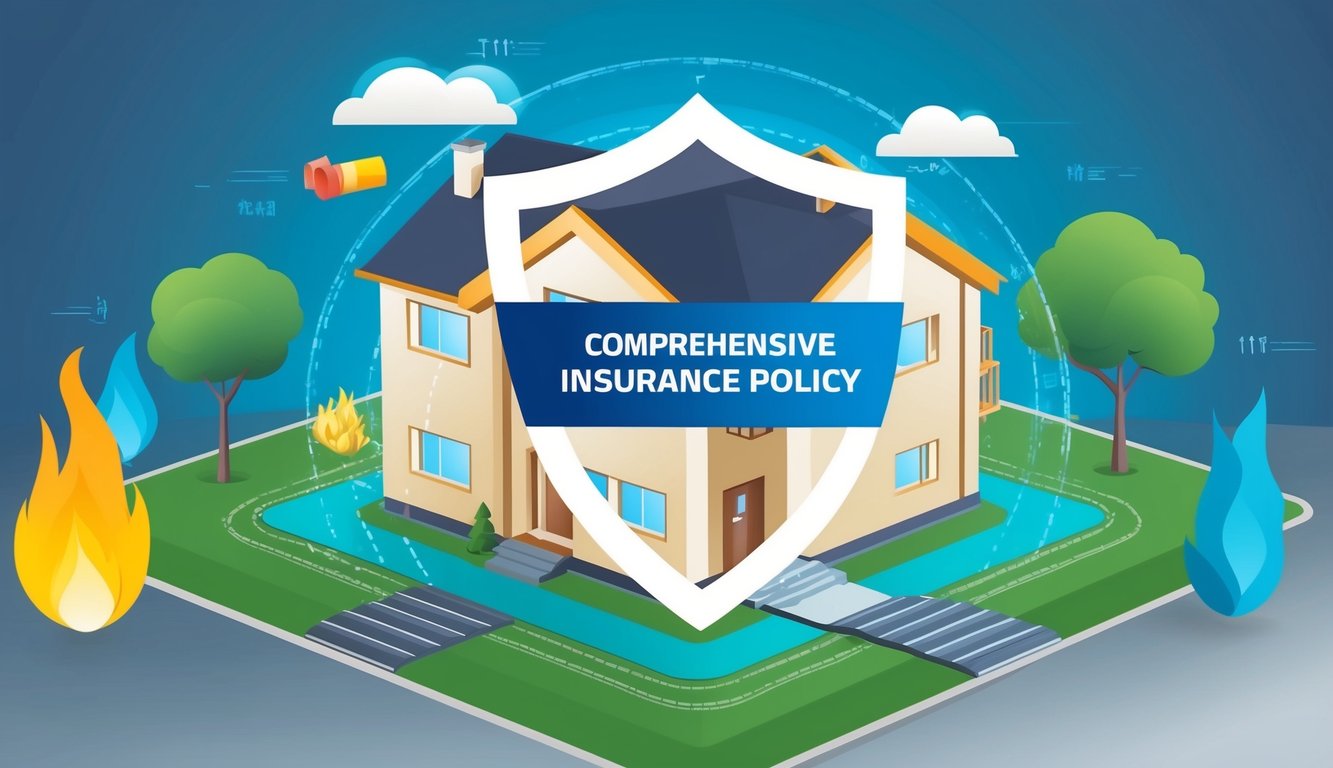
Home improvements can significantly increase your property’s value.
It’s crucial to inform your insurance company about major renovations or additions to your home.
Updating your policy after renovations ensures you’re adequately covered.
This includes projects like adding a new room, updating your kitchen, or finishing your basement.
Failing to update your coverage could leave you underinsured.
If disaster strikes, you might not have enough coverage to rebuild your improved home.
Consider informing your insurer before starting major renovations.
Some projects may require additional coverage during construction.
Keep receipts and documentation of all improvements.
This information helps your insurer accurately assess your home’s new value.
Remember, even minor upgrades can add up over time.
Regularly review your policy to ensure it reflects your home’s current state.
Home insurance policies often have an 80% rule for replacement cost.
This means you need to insure your home for at least 80% of its replacement value.
As your home’s value increases with improvements, so should your coverage.
Don’t risk being underinsured due to outdated policy information.
Periodic professional appraisals can help you stay on top of your home’s changing value.
Use these assessments to guide your insurance coverage decisions.
3) Consider Flood Insurance Even If Not Required
You might think flood insurance is unnecessary if you don’t live in a high-risk area.
However, flooding can occur anywhere, and standard homeowners insurance typically doesn’t cover flood damage.
Many homeowners outside of FEMA’s high-risk zones don’t purchase flood insurance.
This decision could leave you financially vulnerable in case of unexpected flooding.
Even an inch of water can cause significant damage to your home.
Without flood coverage, you’d be responsible for all repair and replacement costs out of pocket.
You can buy federal flood insurance regardless of your location, as long as your community participates in the National Flood Insurance Program (NFIP).
Renters can also benefit from flood insurance.
While you may not need to insure the building itself, you can get contents coverage to protect your belongings.
Don’t wait for a flood warning to purchase coverage.
There’s usually a 30-day waiting period before a flood policy takes effect, so it’s best to plan ahead.
By considering flood insurance even when it’s not required, you’re taking an important step to protect your home and finances from unexpected water damage.
4) Purchase Replacement Cost Coverage
Opting for replacement cost coverage is a smart way to protect yourself from being underinsured.
This type of policy pays to replace your damaged or stolen property with new items of similar quality and functionality.
Standard policies often provide actual cash value coverage, which factors in depreciation.
This can leave you short when it comes time to replace your belongings.
Replacement cost insurance covers the full cost to replace your items at current market prices.
This means you can replace your 5-year-old TV with a new equivalent model without paying extra out of pocket.
Be sure to carefully review your policy to understand what’s covered.
Some items like jewelry or art may have special limits and require additional coverage.
You should also consider extended replacement cost coverage for your home’s structure.
This provides extra protection if rebuilding costs exceed your policy limits due to inflation or increased construction costs.
Regularly update your home inventory and reassess your coverage needs.
As you acquire new items or make home improvements, your replacement cost needs may change.
Remember, the goal is to have enough coverage to fully replace your home and belongings if disaster strikes.
While replacement cost coverage may increase your premiums slightly, it provides valuable protection against being underinsured.
5) Bundle Policies for Discounts
Bundling your home insurance with other policies can lead to significant savings.
Many insurers offer discounts when you combine multiple policies with them.
The most common bundle is home and auto insurance.
By bundling these two policies, you could save an average of 19% annually on your premiums.
Some companies also allow bundling home insurance with other types of coverage.
This might include renters insurance, life insurance, or umbrella policies.
To take advantage of bundling discounts, contact your current insurer.
Ask about multi-policy options and potential savings.
It’s also wise to shop around and compare offers from different companies.
When exploring bundle options, make sure the combined coverage meets your needs.
Don’t sacrifice necessary protection just to get a discount.
Keep in mind that bundling doesn’t always result in the lowest overall cost.
Sometimes, having separate policies with different insurers can be cheaper.
To find the best deal, compare the bundled price to the cost of individual policies from various providers.
This extra step can help ensure you’re getting the most value for your money.
Remember to review your bundled policies annually.
As your insurance needs change, you may need to adjust your coverage or explore new bundling options.
6) Understand Exclusions and Limits
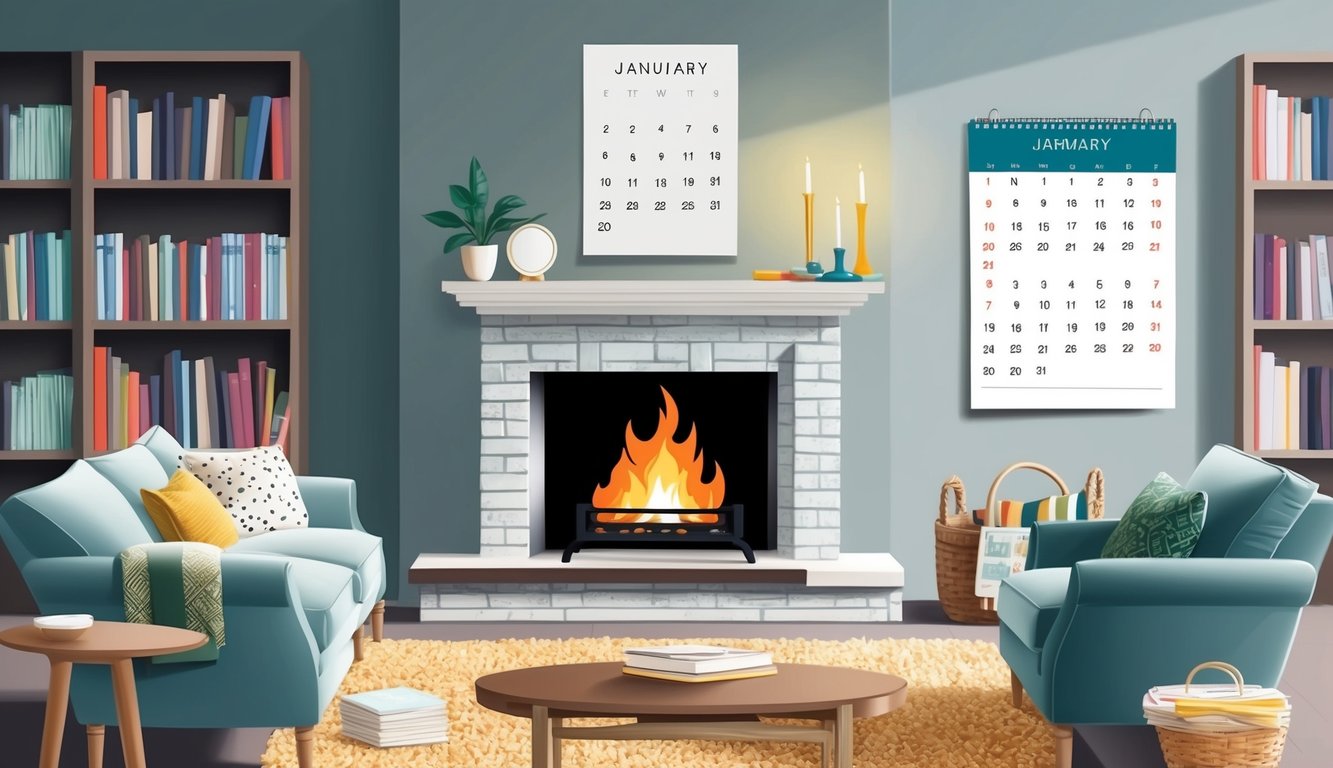
Knowing what your home insurance policy does and doesn’t cover is crucial to avoid being underinsured. Standard home insurance policies have exclusions that you need to be aware of.
Common exclusions often include flood damage, earthquakes, and pest infestations.
If you live in an area prone to these risks, you may need additional coverage.
Pay attention to coverage limits for valuable items like jewelry, art, or electronics.
These may have specific caps that are lower than you expect.
Review your policy’s liability coverage.
This protects you if someone is injured on your property or you accidentally damage someone else’s property.
Check for any endorsements or riders you might need to add to your policy.
These can provide extra protection for specific items or situations not covered by your standard policy.
Consider the costs of rebuilding your home to current building codes.
Some policies may not cover the full cost of upgrades required by new regulations.
If you run a home-based business, your regular home insurance might not cover business-related losses.
You may need a separate business insurance policy.
By understanding these exclusions and limits, you can make informed decisions about additional coverage you might need.
This helps ensure you’re adequately protected against potential losses.
7) Improve Home Security for Better Rates
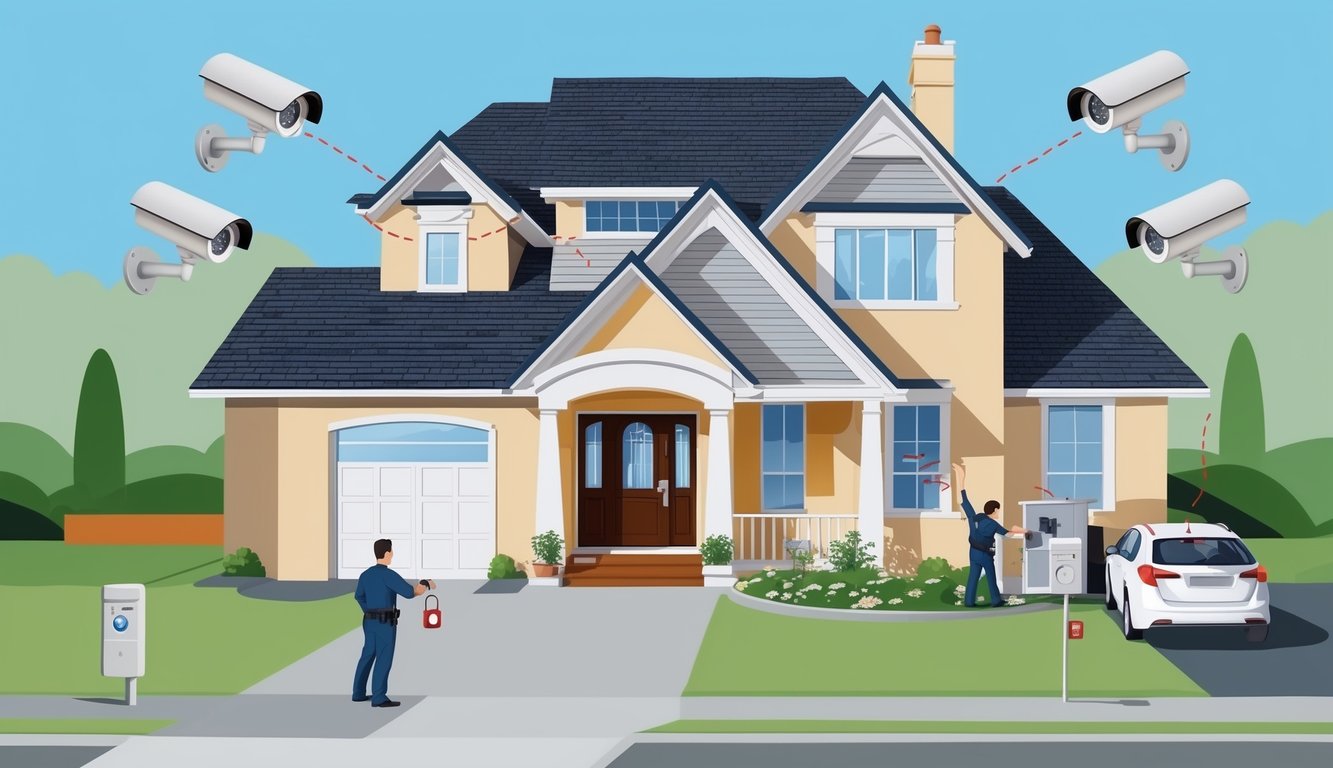
Enhancing your home’s security can lead to lower insurance premiums.
Many insurers offer discounts for homes with robust security measures in place.
Installing a comprehensive security system is an effective way to reduce your insurance costs.
This might include features like motion sensors, door and window alarms, and 24/7 monitoring services.
Smart home devices can also contribute to better rates.
Consider adding smart locks, doorbell cameras, and water leak detectors.
These gadgets not only improve security but also help prevent potential damages.
Smoke detectors and carbon monoxide alarms are essential safety features.
Ensure you have an adequate number of these devices installed throughout your home.
Upgrading your locks to deadbolts can provide an extra layer of security.
Some insurers offer discounts for homes with high-quality locks on all exterior doors.
Outdoor lighting is another simple yet effective security measure.
Motion-activated lights can deter intruders and improve overall safety around your property.
Remember to inform your insurance provider about any security improvements you make.
They may require proof of installation or professional monitoring services to apply the discounts.
Regularly maintaining and testing your security devices is crucial.
This ensures they function properly when needed and continue to qualify you for insurance discounts.
8) Keep an Inventory of Personal Belongings
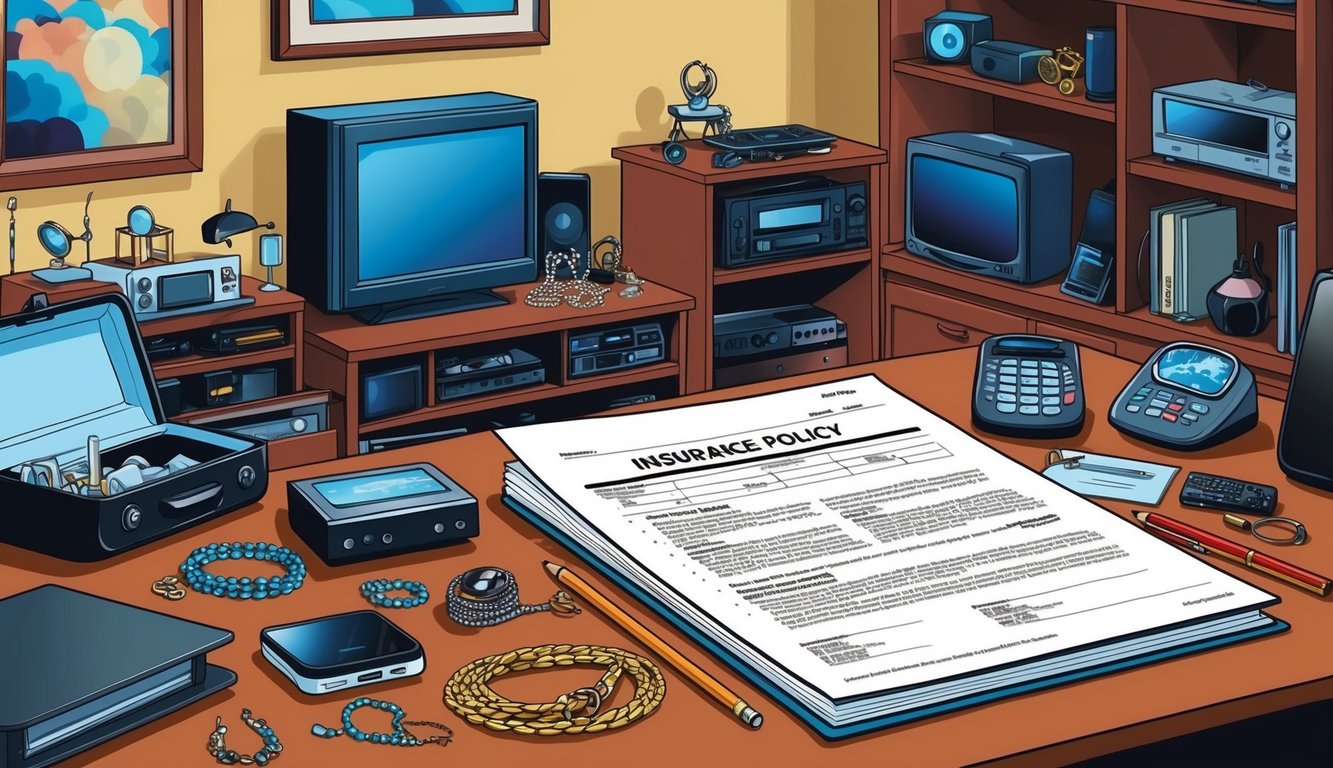
Creating a personal property inventory is crucial for avoiding underinsurance.
This list documents all your possessions and their estimated values.
It helps you determine the appropriate amount of coverage needed for your belongings.
Start by going room by room, listing every item you own.
Include furniture, electronics, clothing, jewelry, and appliances.
Don’t forget items stored in closets, attics, or garages.
For high-value items like artwork or antiques, consider getting professional appraisals.
These can provide accurate valuations for insurance purposes. Maintain an inventory of your personal property to ensure you have adequate coverage.
Take photos or videos of your belongings to supplement your written inventory.
This visual evidence can be invaluable if you need to file a claim.
Store digital copies of your inventory and photos in a secure, off-site location or cloud storage.
Update your inventory regularly, especially after major purchases or life events.
This ensures your insurance coverage remains current.
Remember to adjust your policy limits if the total value of your belongings increases significantly.
A personal property inventory helps you avoid being underinsured by providing a clear picture of what you own.
It also simplifies the claims process if you ever need to use your insurance.
9) Consult an Independent Insurance Agent

Independent insurance agents can be invaluable resources when it comes to ensuring your home is adequately insured.
These professionals work with multiple insurance companies, giving them a broader perspective on available policies and coverage options.
By consulting an independent agent, you gain access to their expertise and industry knowledge.
They can assess your specific needs and recommend the most appropriate coverage for your home.
Independent agents can help you understand complex policy terms and identify potential gaps in your coverage.
They’ll explain how factors like home improvements or changes in your neighborhood might affect your insurance needs.
These agents can also compare quotes from different insurers to find the best value for your money.
They may uncover discounts or bundling options you weren’t aware of, potentially saving you money while improving your coverage.
An independent agent can review your policy annually to ensure it still meets your needs as your circumstances change.
They can advise on adjusting your coverage if you’ve made renovations or acquired valuable items.
Remember, insurance needs vary greatly from one homeowner to another.
An independent agent can provide personalized advice tailored to your specific situation, helping you avoid the pitfall of being underinsured.
10) Increase Liability Protection
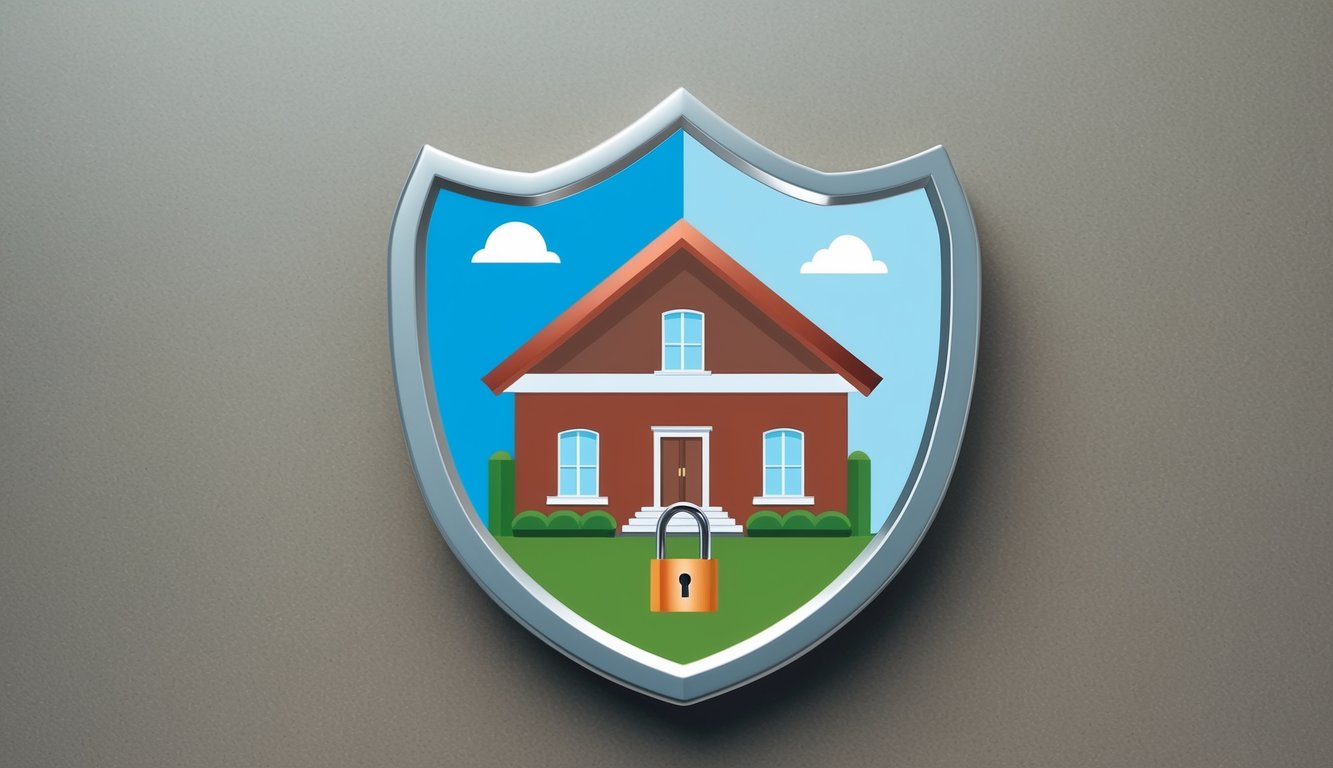
Boosting your liability protection is crucial to avoid being underinsured.
Standard home insurance policies typically offer limited liability coverage, which may not be sufficient in today’s litigious society.
Consider increasing your liability limits to protect your assets.
Many experts recommend at least $300,000 to $500,000 in coverage, but your specific needs may vary based on your financial situation.
An umbrella policy can provide additional liability protection beyond your home insurance limits.
These policies often offer $1 million or more in coverage at a relatively affordable price.
Liability coverage protects you if someone is injured on your property or if you accidentally damage someone else’s property.
It can cover legal fees and settlements if you’re sued.
Review your current liability limits and assess whether they’re adequate for your needs.
Consider factors like your net worth, potential risks on your property, and your lifestyle when determining the appropriate coverage.
Talk to your insurance agent about increasing your liability protection.
They can help you understand your options and recommend the right coverage levels for your situation.
Remember that liability claims can be costly, and inadequate coverage could put your assets at risk.
Investing in higher liability limits now can provide peace of mind and financial protection in the long run.
Understanding Home Insurance Coverage
Home insurance protects your property and finances.
It’s crucial to grasp the basics of coverage to ensure you’re adequately protected.
What Is Home Insurance?
Home insurance is a policy that safeguards your house and belongings against various risks.
It provides financial protection if your home is damaged or destroyed by covered perils like fire, storms, or theft.
Home insurance policies typically cover the structure of your home, personal property, and liability.
They may also include additional living expenses if you’re temporarily displaced.
Understanding your policy is essential to avoid being underinsured.
Review your coverage regularly, especially after home improvements or major purchases.
Types of Home Insurance Policies
Several types of home insurance policies exist, each offering different levels of protection:
- HO-1: Basic form (limited coverage)
- HO-2: Broad form
- HO-3: Special form (most common)
- HO-4: Renters insurance
- HO-5: Comprehensive form
- HO-6: Condo insurance
- HO-7: Mobile home insurance
- HO-8: Older home insurance
HO-3 policies are the most popular, offering broad coverage for your home and possessions against named perils.
Key Components of Home Insurance
Your home insurance policy typically includes these essential components:
- Dwelling coverage: Protects the structure of your home
- Personal property coverage: Safeguards your belongings
- Liability protection: Covers legal expenses if someone is injured on your property
- Additional living expenses: Pays for temporary housing if your home is uninhabitable
To avoid being underinsured, ensure your dwelling coverage matches your home’s replacement cost.
Many insurers require at least 80% of the replacement value to be covered.
Regularly reassess your coverage needs, especially after renovations or acquiring valuable items.
Assessing Your Home Insurance Needs
Proper evaluation of your home insurance needs is crucial to avoid being underinsured.
Consider your property value, personal belongings, and potential liability risks to ensure comprehensive coverage.
Evaluating Property Value
Start by accurately assessing your home’s replacement cost.
This differs from market value and represents the amount needed to rebuild your home from scratch. Get an professional appraisal to determine the current replacement cost.
Factor in local construction costs, which can vary significantly by region.
Don’t forget to account for any recent renovations or upgrades that may have increased your home’s value.
Be aware of the 80% rule for replacement cost insurance.
You must insure your home for at least 80% of its replacement cost to receive full coverage for claims.
Determining Personal Property Coverage
Create a detailed inventory of your belongings.
Document items with photos, descriptions, and estimated values.
This helps ensure you have adequate coverage for your possessions.
Consider high-value items like jewelry, art, or electronics.
These may require additional endorsements or riders for full protection.
Review your policy’s personal property coverage limit.
It’s typically a percentage of your dwelling coverage.
Assess if this is sufficient for your needs.
Maintain and update your inventory regularly to reflect new purchases or valuable gifts.
Considering Liability Coverage
First, evaluate your potential liability risks.
This includes accidents on your property or damage you may cause to others.
Standard policies usually offer $100,000 to $300,000 in liability coverage.
Assess if this is enough based on your assets and lifestyle.
If you have significant assets or high-risk features like a pool, consider increasing your liability limit or purchasing an umbrella policy for extra protection.
Review your policy’s liability coverage whenever your financial situation changes, such as inheriting money or increasing your assets.






